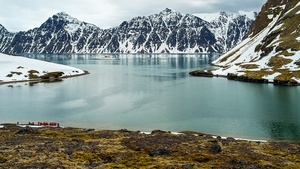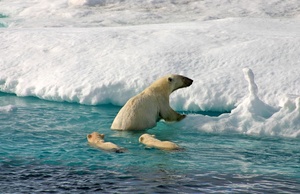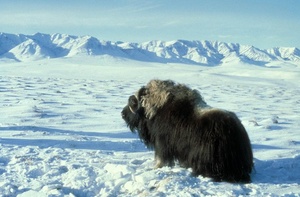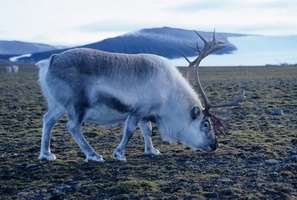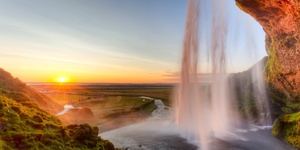Rates
Dates
Rates:
PER PERSON:
$12,590.00 (Cat. G)
$ 7,390.00 (Cat. F )
$10,590.00 (Cat. E)
$ 9,790.00 (Cat. D)
$11,390.00 (Cat. C)
$12,590.00 (Cat. B)
$13,590.00 (Cat. A)
$15,690.00 (Freydis Suite)
$22,090.00 (Brynhilde Suite)
CATEGORIES' DESCRIPTION:
Category G - Single Stateroom Porthole 14 sq. m
Category F - Triple Stateroom Porthole 22 sq. m
Category E - French Balcony Suite 16 sq. m
Category D - Balcony Stateroom 22 sq. m
Category C - Balcony Stateroom 24 sq. m
Category B2 - Balcony Suite 28 sq. m
Category B1 - Balcony Suite 35 sq. m
Category A - Junior Suite 42 sq. m
Premium Suite - Premium Suite 45 sq. m
Dates:
Cabin Description:
Included:
- 11-day/10-night cruise in a shared outside double stateroom with bathroom/toilet.
- Flight Kangerlussuaq - Copenhagen.
- Slow-cruising in Zodiacs in fjords.
- Briefings and guided walks by tour leaders.
- English-speaking guides.
- Inspiring and enriching presentations onboard by qualified lecturers.
- Cultural activities in port, as per itinerary
- Full board on the ship.
- Free coffee, tea and afternoon snacks on the ship.
- Taxes and tariffs.
Optional Services:
Ilulissat to Oqaatsut Day Hike
Kayaking
Kangerlussuaq Sightseeing
Trip to Raindeer Glacier
Icefjord Flight Sightseeing
Boat Trip to the Icefjord
Itinerary:
Join us on a thrilling expedition cruise from Reykjavik to Kangerlussuaq, following the same maritime course set by Norse settlers over a thousand years ago. While the spectacular scenery of this region remains unchanged, our purpose-built expedition ship offers significantly more comfort and style than a Viking longship! Our first destination is the spectacular east coast of Greenland, where we will experience the charming silence and breathtaking scenery of the undisturbed Skjoldungen Fjord.
From here we will sail through the magnificent strait of Prins Christians Dund, a glacier-lined channel separating Kap Farvel (Greenland's southernmost point) from the mainland. We will venture deep into the fjords of South Greenland to visit the ancient remains of Brattahlíð, Erik the Red's former farmstead in the small farming village of Qassiarsuk. The lush green fields and rolling hills of South Greenland make it easy to see why the Norse gave the island the name it bears to this day - and why the Norse chose to settle in this green paradise.
Following the magnificent coastline of Earth's largest island, we will visit Nuuk, one of the smallest (but no less perfect) world capitals. With everything you would expect from a capital city, including skyscrapers, exceptional museums and boutique shopping, Nuuk still has a strong Greenlandic vibe; tiny traditional wooden houses sit in the shadow of glassy towers, and locals buy seal and whale meat at the city market.
From Nuuk we will chart a course for Disko Bay in North Greenland, a region synonymous with astounding natural beauty. We will experience local Inuit culture in Qeqertarsuaq, a colourful town situated beneath sweeping basalt mountains, and sail to the renowned Eqip Sermia Glacier, one of the most active calving glaciers in the Arctic. From Eqip Sermia we will sail to the city of Ilulissat, one of Greenland's most exciting towns, and the site of the mind-boggling UNESCO World Heritage Site of Ilulissat Icefjord, where city-sized icebergs drift into the ocean just a short easy walk from this bustling little city.
Join us onboard Ocean Albatros for an enriching experience combining Nordic and Inuit culture and the natural wonders of the Arctic!
The rock-like columns of Hallgrímskirkja Church loom over the city of Reykjavík, a hip Scandi capital which needs little introduction. With new Nordic cuisine, excellent shopping, fantastic excursions and an easy relaxed vibe, Reykjavík is one of Scandinavia's most welcoming and exciting cities.
In the afternoon, we await to welcome our guests onboard Ocean Albatros. After our mandatory safety drill, enjoy dinner and a glass of champagne as we set sail a course for adventure as we set out across the Denmark Strait, bound for Greenland.
The Denmark Strait is the narrow section of the North Atlantic separating Iceland from Greenland. This body of water is among the most productive in the world, where the cold polar East Greenland Current collides with the warm northbound Gulf Stream. These nutrient-rich waters support vast stocks of fish, and the humans, seals, whales and seabirds which rely on them.
Days at sea are never dull. We will arrange a variety of activities onboard for our guests to enjoy to engage the mind, body and soul. Join your knowledgeable Expedition Team lecturers in the Theatre to hear specially-crafted lectures on local history, wildlife, geology, culture and more, unwind with a massage in the Albatros Polar Spa, or simply watch the seabirds gliding along the ship from our hot tubs as the Ocean Albatros flies across the Denmark Strait.
Today's adventure begins as we sail into magnificent Skjoldungen, a staggeringly beautiful fjord on the southeastern coast of Greenland. The fjord is named for Skjold, an ancient Danish King of Norse legend, while the Greenlandic name, Saqqisikuik, references the sunny climate of the area. Various archaeological finds on the island which sits in the middle of the fjord suggests nomadic Inuit groups visited and stayed in the area in years gone by; more recently, settlers were brought from Tasiilaq to settle the island in the 1930s, but returned there thirty years later; some houses can still be seen on the southern side of the fjord. A small weather station was also operated on the island by the Allies during WWII.
Today uninhabited, Skjoldungen sits almost 300km from the nearest village, with Mother Nature its only ruler. Vast saw-toothed mountains lined with opalescent glaciers line the deep chilly waters of the fjord, which can freeze even in summer. At the head of the fjord lies the magnificent Thryms Glacier, a magnificent river of ice flowing down from the ice sheet. On the southern side of Thryms Glacier lies the sweeping U-shaped glacial valley of Dronning Maries Dal - a textbook example of a glacially-produced landscape. Join your expedition team for a walk on the flower-lined floor of this valley, and marvel at the stunning scenery. Ensure you are on the outer decks on our approach and departure from this magnificent fjord too: you will not be disappointed!
South of Skjoldungen lies Kap Farvel, or Cape Farewell, which is renowned not only as Greenland's southernmost point, but also for its infamously challenging weather, which commonly features large swells and gale-force winds.
With this in mind, we deliberately opt for a far more comfortable but also more spectacular route, cruising via the inside passage of Prins Christian Sund. Known in Greenlandic by it's typically descriptive name of Ikerasassuaq ('the Big Strait'), this 60 km long waterway reaches from the entrance on the southeastern coast of Greenland to the small village of Aappilattoq, connecting the Labrador and Irminger Seas.
Prins Christian Sund is one of the most spectacular waterways anywhere on Earth. Kept free of ice year round by strong tidal currents, the strait is hemmed in on either side by mountains which rise straight out of the water some reaching over 2,000m in height. Large glaciers flow from the ice sheet into the sea on the northern side of the strait, while sapphire blue mountain glaciers loom over the water from the southern side, and vast icebergs stud the glassy waters.
During the early morning, Ocean Albatros will sail through the majestic mountains of Tunulliarfik Fjord towards the small village of Qassiarsuk. The southern fjords of Greenland offer a very different environment to the chilly north of the country. Situated at roughly 60°N, this region is level with northern Scotland or southern Scandinavia, with a climate to match. Here, the weather is calm, stable and humid, with much warmer summers and milder winters than the rest of the country. In place of rocky hillsides, the fjords here are lined with lush green meadows and dotted with small sheep-farming settlements, of which Qassiarsuk is perhaps the best known.
While the modern village of Qassiarsuk was founded in 1924, the location has a fascinated and much longer history; it was here that Eric the Red, legendary Norse explorer settled after being banished from Iceland. He named the land he discovered 'Greenland' to encourage other settlers to follow him - a marketing ploy that has stood for over a thousand years!
Erik the Red settled in this green landscape and set up a small farmstead in typical Norse style, naming his new settlement Brattahlíð. Erik himself kept fiercely to the Norse gods, but his wife Thjodhild was a Christian. Legend has it, she refused to join his bed until he built her a church, which he eventually did, constructing a tiny hut (Þjóðhildarkirkja) which was nevertheless the first church in the Americas (although he refused to have it within view of his house).
The Norse settlers in Greenland stayed for almost 500 years, but disappeared from all historical records in the early 1400s. Whether some plague or famine struck them, or whether deteriorating climate simply forced them to return to Scandinavia remains a topic of lively debate. Today the outlines of buildings (including Erik's house and Thjodhild's church) can be seen, along with stunningly accurate reconstructions of the farm. Modern Inuit farmers continue to raise sheep in the same farms as Erik the Red, and a statue of Erik now overlooks the village, commemorating the first European to reach the Americas, whose son Leif would be the first European to reach Baffin Island and Newfoundland. A site rich in fascinating history and culture old and new, the settlement of Brattahlíð is today part of the Kujataa UNESCO World Heritage Site.
A mixture of skyscrapers and traditional wooden houses, the quaint and the cosmopolitan, Nuuk is a city of contrasts. The vibrant bustling capital of Greenland, Nuuk feels much larger than it’s 19,000 inhabitants, and offers a wealth of experiences to visitors. The calm fjords around Nuuk have been inhabited by Paleo-Inuit cultures since at least 2200BCE, and archaeological evidnece indicates waves of migration through the area as ancient hunters followed migrating prey. Around the year 100CE, Norse colonist from Iceland etablished the Western Settlement in the green meadows of Nuuk Fjord; these settlers mysteriously disappeared several hundred years later leaving the island to the Inuit, who were far better equipped to live in Greenland's harsh environment.
The next Scandinavian to visit the area was Hans Egede, the controversial Danish missionary who 'rediscovered' Greenland, founding Nuuk as Godthåb ("Good Hope") in 1728. Danish initiatives to modernise Greenland in the 1950s left a significant mark on Nuuk. While they brought significant improvements to the city's infrastructure, the many large apartment blocks in the city attest to rapid (and sometimes haphazard) urbanisation. In 1979, the Home Rule Act created the Greenlandic Parliament (Inatsisartut), and procraimed Nuuk the capital. The city's population continues to rapidly grow, with new suburbs being constructed beneath Ukkusissat, the mountain which looms to the east of the city.
Nuuk offers a huge amount to the discerning visitor; larger than any other city in Greenland, Nuuk has a bustling cosmopolitan vibe, and hosts some of Greenland's best attractions. Swing by Kolonihavn district to visit the Greenlandic National Museum, a treasure trove of history stretching back to the first inhabitants of this icy island - including artefacts from the Paleo-Inuit and Norse periods, as well as the spellbinding Qilakistoq mummies. Explore Greenlandic culture at Katuaq, the city's cultural centre, and an architectural marvel; shop for authentic Greenlandic artworks in the city's many boutique shops, or simply relax at a hip curbside café with a Greenlandic coffee and watch this vibrant city in action. Nuuk York (as proud locals call it) is unlike any other city in Greenland, or indeed the world.
From Nuuk, Ocean Albatros will follow the rugged coast of Greenland northwards. All settlements in Greenland (with the exception of Kangerlussuaq) are situated directly on the ocean coast of the country, and the vast majority of residents (some 50,000 or so) live on the narrow strip of coast on the west of the country, facing the Davis Strait. Ocean currents bring warm water up from the Atlantic to the west coast, enriching these wildlife-filled waters. During our day at sea, keep your eyes on the sea! Whales, seals and a huge variety of seabirds are common in these rich waters.
Days at sea are never dull. We will arrange a variety of activities onboard for our guests to enjoy to engage the mind, body and soul. Join your knowledgeable Expedition Team lecturers in the Theatre to hear specially-crafted lectures on local history, wildlife, geology, culture and more, unwind with a massage in the Albatros Polar Spa, or simply watch the seabirds gliding along the ship from our hot tubs as the Ocean Albatros flies along the coast of Greenland.
Nestled below Disko Island’s 1,000-metre mountains, we pull into port in a beautifully sheltered natural harbour. The place was aptly named Godhavn (“Good Harbour”) in Danish, while its Greenlandic name “Qeqertarsuaq” simply means “The Big Island”.
For most of Greenland’s modern history, Godhavn was the political and economic capital of North Greenland (while Godthåb, now Nuuk, served this role in Southern Greenland). Its importance was due to the vast economic activity generated by whaling in Disko Bay, the preeminent Arctic industry since the 16th Century. As the whaling industry collapsed in the early 1900s, Godhavn lost its political status as all government functions moved south to Godthåb/Nuuk, and the town was forced to reinvent itself, changing its name to Qeqertarsuaq in 1979 . Today, hunting and fishing are the main industries in Qeqertarsuaq, while tourism is becoming increasingly important. Ferries arrive in the town daily in summer from around Disko Bay, while in winter, access is only by helicopter from nearby Ilulissat.
Qeqertarsuaq’s sweeping red-and-black basalt mountains are radically different to the rolling granite hills which characterize much of Greenland, and provide a much richer soil. Despite being situated well above the Arctic Circle, this rich volcanic soil and the area’s mild microclimate make it much more green and lush compared to the rest of the country. Locals from all over Disko Bay come to the island in summer to hunt and collect angelica, herbs and mushrooms, and the stunning rock formations and black sand beaches attract visitors from all over the world. The town itself is typically Greenlandic, with quaint multicoloured homes, a splendid museum, and the unique octagonal church nicknamed 'God's Inkpot' (built in the Norwegian stave style). With excellent hiking opportunities, friendly locals, and a fascinating place in regional history, Qeqertarsuaq has a lot to offer. From here, we set sail across Disko Bay towards Eqip Sermia.
Eqip Sermia (a typically descriptive Greenlandic name meaning 'the Glacier at the End of the Fjord') is a relatively small glacier compared to many in Greenland, although it is still a truly vast river of ice, flowing directly from the Greenland Ice Sheet. It is also one of the most active, and ice tumbles off the vast glacier-front almost constantly. Watching the vast cataracts of ice fall into the ocean is a sight which has to be seen to be believed - and the comfortable viewing decks of Ocean Albatros offer the best possible platform to do so... Perhaps with a specially crafted cocktail in hand!
From Eqip Sermia, we will reposition slightly southwards during the evening towards Ilulissat, the largest city in Disko Bay and the Iceberg Capital of the World.
This is it. This is why visitors from all over the world come to Greenland. Translated from Kalaallisut simply as ‘icebergs’, Ilulissat is rightly known the world over as ‘the Iceberg Capital of the World’. Surely no other city on Earth occupies such a spectacular natural setting.
Situated within a short walk of the harbour lies Ilulissat Icefjord, Greenland’s most famous site. Choked with city-sized icebergs so closely packed one could almost walk across to the other side, Ilulissat Icefjord stretches 70 km from its outlet in Disko Bay near the city of Ilulissat back to the Sermeq Kujalleq glacier. This is the single largest glacier on Earth outside Antarctica, draining 13% of the Greenland Ice Sheet, and producing 10% of all the ice in the Northern Hemisphere (enough water to supply the annual needs of the entire United States). These mind-blowing statistics, together with the indescribably beautiful scenery, have secured the Ilulissat Icefjord designation as a UNESCO World Heritage Site.
While archaeological finds detail the long Inuit habitation of the area, the modern town has steadily flourished in the 280 years since its establishment; legendary Arctic explorer, Knud Rasmussen was born in Ilulissat, and his childhood home now houses the city museum. Today, Ilulissat is Greenland’s third largest town, with more than 4,500 inhabitants, and is undoubtedly Greenland’s tourism capital, with more hotel rooms than even Nuuk. The city offers excellent amenities to visitors, with fresh locally caught seafood served in the city’s cafes and restaurants, and excellent shopping – look out especially for the Artist’s Workshop above the harbour, where you can buy handmade artworks direct from the artist. The city typically experiences dry sunny weather throughout the summer, and there are a variety of well-marked hiking routes around the Icefjord, with options to suit all abilities.
During the visit you will have the opportunity to join a boat trip with a local captain to the Icefjord (optional excursion – charge applies). The journey takes about two and a half hours and is considered the best way to experience the magic of Ilulissat Icefjord up close. If a hike or a trip by boat does not present enough excitement, there is also an opportunity to join a flightseeing excursion in fixed-wing aircraft over the Icefjord (optional excursion – charge applies).
Please note the boat and flight excursions to the Ice fjord are not included in the general tour price. Refer to Price Information for further details.
The settlement of Itilleq, which translates roughly as "the Crossing place from the Sea", nestles at the foothills of the mountains and and fjords which line central Greenland's backcountry. Situated just north of the Arctic Circle, Itilleq is one of the many tiny villages dotting the coast of Greenland.
The settlement is situated in the heart of the Aassivisuit-Nipisat UNESCO World Heritage Site, which was inscribed due to its ancient Inuit hunting heritage, documenting the entire habitation history of Greenland. While the turf houses and hide tents have been replaced by colourful modern houses, the lifestyle here has changes little since the Inuit first arrived in Greenland. The local highways are the water and the ice, and the sea and tundra continue to nourish the locals, as they has for thousands of years. Arctic char, reindeer and muskoxen are typical catches, and are all plentiful in the area.
Despite this ancient heritage, locals in Itilleq are still firmly in the modern world, with smartphones, speedy wifi and satellite TV. However, the people of Itilleq remain justly proud of their ancient heritage, and continue to move their culture forward in a modern fast paced world. Locals are pleased to show off their picturesque town, and visitors are greeted with typical warm Greenlandic hospitality. After departing Itilleq, we will head slightly south and enter the 160km-long Kangerlussuaq Fjord.
During the night, we will sail up the 160-kilometer/100 mile Kangerlussuaq Fjord. After breakfast aboard the ship, we will bid a fond farewell to the ship's crew, Expedition Team and fellow travelers before shuttling ashore by Zodiac.
Due to Kangerlussuaq’s military history and present-day role as an important air travel hub, the town remains fairly isolated from Greenland’s rich cultural traditions, in comparison to other regions. While you still find cultural experiences when visiting Kangerlussuaq, the most impressive attraction is the surrounding nature, which is just beckoning to be explored. The town itself was largely constructed by the American military in the 1950s, and this small airport town has retained something of its Cold War atmosphere. Your Arctic adventure and time in Greenland concludes as we arrive at the sleek modern airport terminal - with memories to last a lifetime.
Notes:
Excluded:
- Hotel accommodation in Iceland.
- Travel insurance.
- Cancellation insurance.
- Extra excursions and activities not mentioned in the itinerary.
- Single room supplement.
- Meals not on board the ship.
- Beverages (other than coffee and tea).
- Tips for the crew (we recommend USD 16 per person per day).
- Personal expenses.
- Anything not mentioned under 'Price includes'.
 East West Tours
East West Tours Nordic Saga Tours
Nordic Saga Tours

 Send review
Send review Print
Print 
